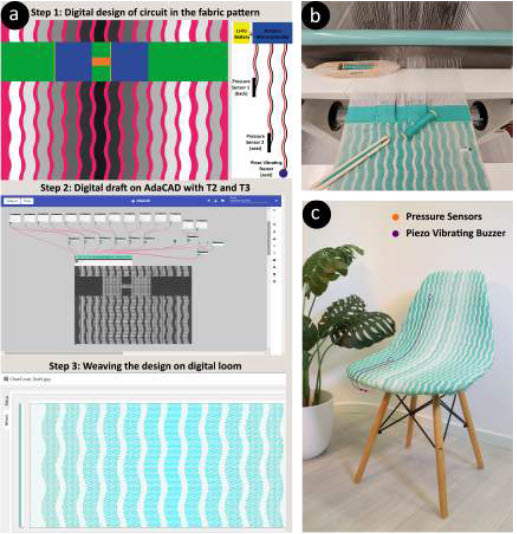Previous work explored techniques for creating woven e-textiles, emphasizing interactive input and output elements. However, the integration of electrical connections and circuitry remains under explored. Using Research through Design (RtD), we present WovenCircuits, a design-led inquiry into combining traditional weaving methods with computational design on digital Jacquard looms to create woven circuit schematics. Through iterative design experiments, we developed a 3-step process and characterized three fabrication techniques to: 1) weave insulated electrodes, 2) integrate rigid components into fabric, and 3) create woven electrical connections. We further examined their electrical behaviour through key design factors and evaluated the effect of washability on resistance and dimensions. To demonstrate its potential, we designed and built six high-fidelity research products showcasing diverse applications in interactive everyday objects. Finally, we reflect on the design opportunities and limitations of WovenCircuits, contributing to the growing body of knowledge on woven e-textiles.
This research is published here: https://doi.org/10.1145/3715336.3735696

We explore WovenCircuits, a fabrication process to design seamlessly-integrated circuit layouts using digital weaving (right). Adopting a Research through Design (RtD) approach, we contribute a 3-step process (top) and a series of interactive research products that extend the functional and aesthetic dimensions of woven e-textile designs (bottom): a) PowerPocket Jeans for wireless charging; b) Thermo-Placemat for warming food; c) GoGreen Backpack for embodied expression; d) VibroChair
Cover for posture correction; e) SensingRug for activity recognition; and f) ThirstyCat Tapestry for tactile animation.
Design and implementation process for the VibroChair showing the fabrication steps (a), the fabric as it is being woven (b), and the VibroChair (c).

Acknowledgement of Funding
This project was funded by the National Sciences and Engineering Research Council of Canada (NSERC) through a Discovery Grant (2021-04135) and a Research Tools and Instruments (RTI) Grant (2021-00079), as well as through the Social Sciences and Humanities Research Council (SSHRC) NFRF-E-2024-01082. We acknowledge the support of Ontario Research Fund and the Canada Foundation for Innovation (CIF) for this research.